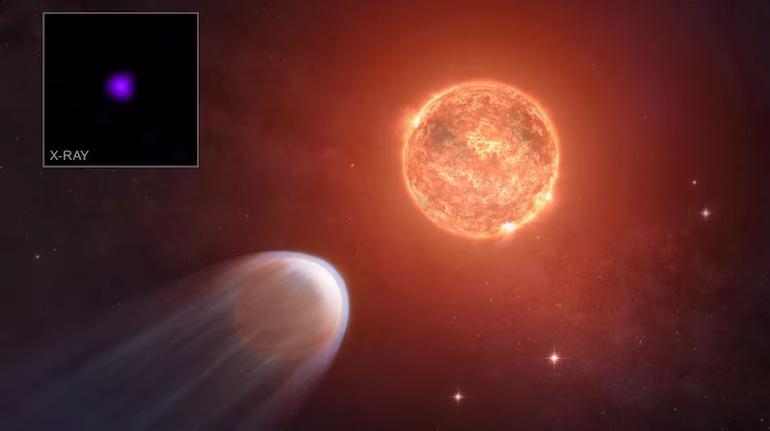
Young Exoplanet is Shrinking Under Host Star’s X-Rays: NASA
In a groundbreaking discovery, NASA’s Chandra X-ray Observatory has revealed that a young exoplanet is shrinking and losing its atmosphere due to intense X-rays and high-energy radiation from its parent red dwarf star. The exoplanet, known as TOI 1227 b, is estimated to lose one Earth atmosphere’s worth of mass every 200 years, making it a fascinating subject of study for astronomers.
Located about 100 light-years from Earth in the constellation of Phoenix, TOI 1227 b is a relatively small exoplanet, with a radius about 10% larger than that of Earth. However, its young age and small size make it an ideal candidate for studying the effects of high-energy radiation on planetary evolution.
According to a study published by NASA, TOI 1227 b is being bombarded by X-rays and high-energy radiation from its host star, a red dwarf star with a mass about half that of the Sun. The intense radiation is causing the exoplanet’s atmosphere to slowly evaporate, leading to a loss of mass and a shrinkage of the planet’s size.
“This is a very young exoplanet, and it cannot survive the X-ray blast from its star,” said Attila Varga, lead author of the study. “The X-rays are stripping away its atmosphere, and it’s losing mass at a rate that’s quite rapid compared to other exoplanets we’ve studied.”
The researchers used NASA’s Chandra X-ray Observatory to study the X-ray emission from TOI 1227 b’s host star and the exoplanet itself. By analyzing the X-ray data, the team was able to determine the amount of mass being lost from the exoplanet’s atmosphere and estimate the rate at which it is shrinking.
The findings of the study have significant implications for our understanding of planetary evolution and the search for life beyond Earth. The loss of atmosphere and shrinkage of TOI 1227 b may ultimately lead to the exoplanet’s demise, making it inhospitable to life.
“This discovery highlights the importance of studying the effects of high-energy radiation on planetary atmospheres,” said Varga. “It’s a reminder that the search for life beyond Earth is not just about finding planets that are similar to our own, but also about understanding the complex interactions between planets and their host stars.”
The study of TOI 1227 b is part of a larger effort by NASA to explore the properties of exoplanet atmospheres and search for signs of life. The agency’s Chandra X-ray Observatory has been instrumental in this effort, providing critical insights into the X-ray emissions from exoplanet host stars and the atmospheres of exoplanets themselves.
As NASA continues to explore the universe and search for life beyond Earth, the discovery of TOI 1227 b serves as a reminder of the importance of understanding the complex interactions between planets and their host stars. The study of this young exoplanet is a crucial step towards unlocking the secrets of planetary evolution and the search for life beyond our solar system.
Source:
https://www.nasa.gov/image-article/nasas-chandra-finds-baby-exoplanet-is-shrinking/






